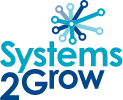Menu
This is the core part of our process – setting up the structure of your manuals and capturing and documenting your procedures.
But first, some principles behind the way we work.
It is absolutely essential your manuals are easy to use. That is – fast to access, simply structured and easy to understand.
This basic requirement sets the framework for every other principle listed below and throughout our teaching.
To ensure there is a clear structure behind your procedures you must only ever document something once.
Yes, there will be some issues which will need to be referenced more than once.
When this happens, think about the structure of your manual so the details are only ever dealt with once and the whole is held together with overviews and links.
We explain how when we discuss linking, overviews and the Table of Contents.
Many business owners who come to us have more than one business entity. And of course, they have one set of admin departments looking after all the businesses and in some cases using the same set of procedures.
This kind of operation can so easily break the one point of truth rule, especially where human resources, health and safety and digital business processes are the same across all the organisations.
To deal with this we recommend you create separate manuals for each of the commonly used procedures and then the individual operations manuals for each business just links as required.
Everyone has a different interpretation of policy, training, and procedures, especially where they overlap. Each interpretation is correct when dealt with within context. Taken out of your context though, use of these words differently can cause significant confusion.
We list the way we use these words and why below.
The main reason we deal with these things in this way is it is the easiest way for your documented processes to meet the requirement of one point of truth and clarity of structure.
If your business has other reasons for changing the way these words are used, then define your way very clearly before you begin so everyone understands your reasons.
Operations, Standard Operating Procedures, SOPs, Procedures, tasks, actions, instructions – the list of ways these are named is numerous. This is where a task is described to show someone how to do it. It is often detailed but, in some circumstances, can be a general instruction.
Most businesses of the size we engage with do not need to write a separate policy manual. If you do need to set the principles or policy behind a suite of procedures, then, in the interests of the one point of truth principle, we recommend these are included in your operations manual, usually at the beginning of the relevant suite of procedures in an overview section.
We would need very good reason to recommend a separate training manual which duplicates the content in the operations manual or to detail how to do just some of the tasks done by staff or franchisees as is done sometimes for skills such as sales and business tasks.



The Systems 2 Grow Systems Success Path Program is delivered in three Parts which cover 12 Steps
Your ideal client
Usable plans
Recruitment & Training
Address:
101 John Lund Drive, Hope Island, Queensland 4212
Contact Number:
Contact US:
